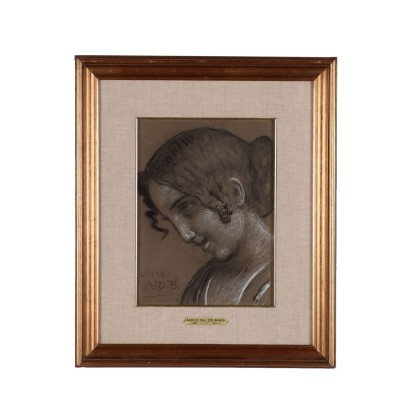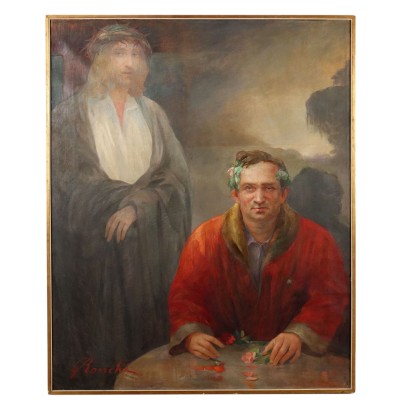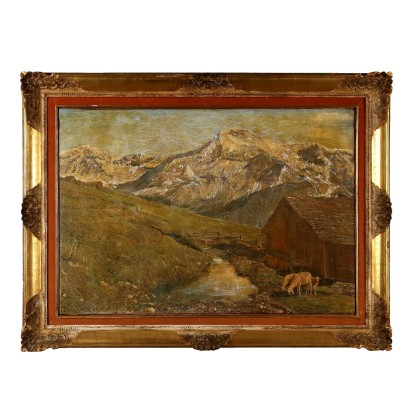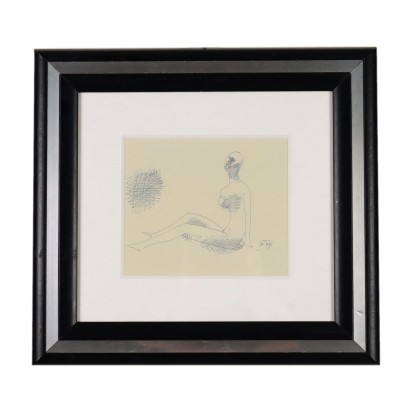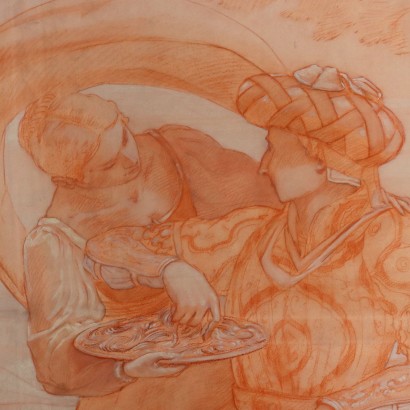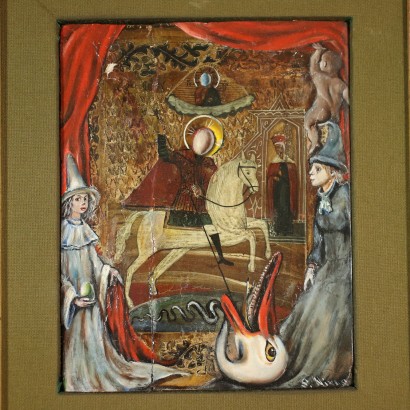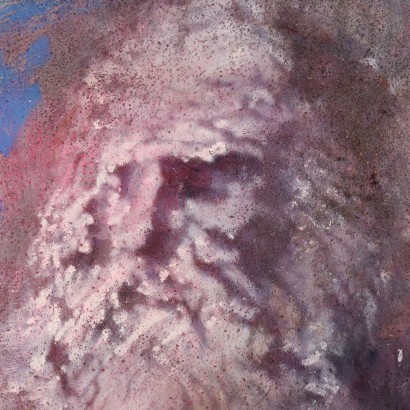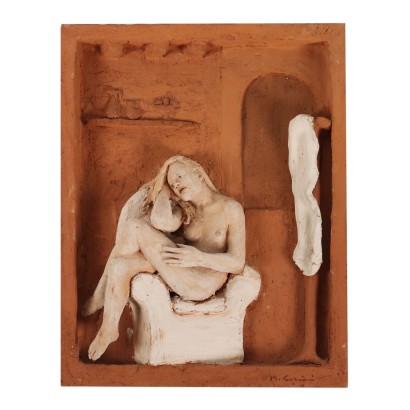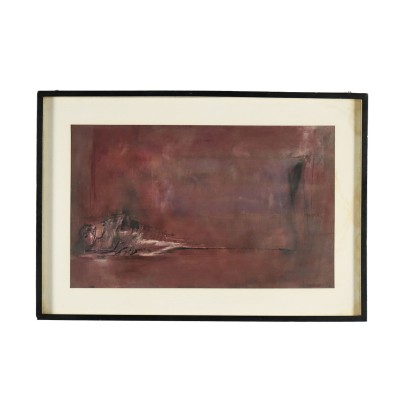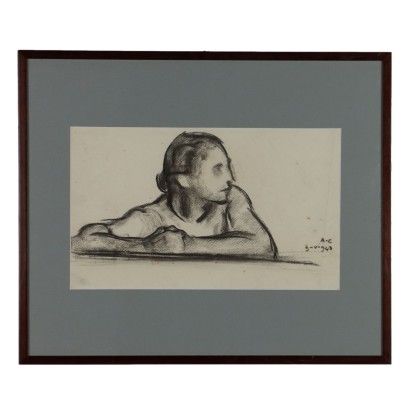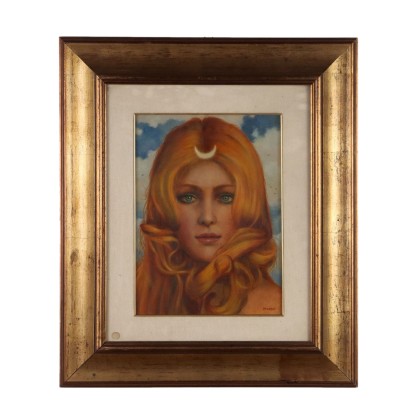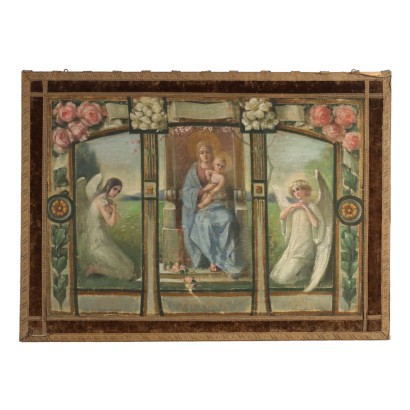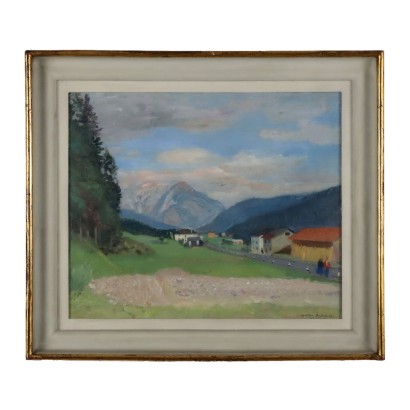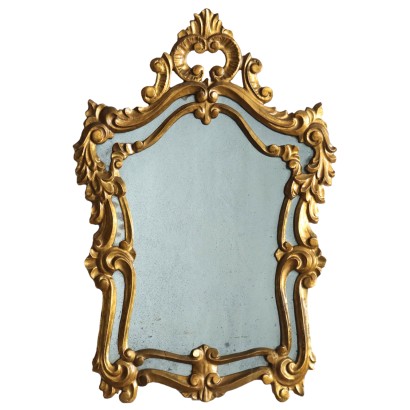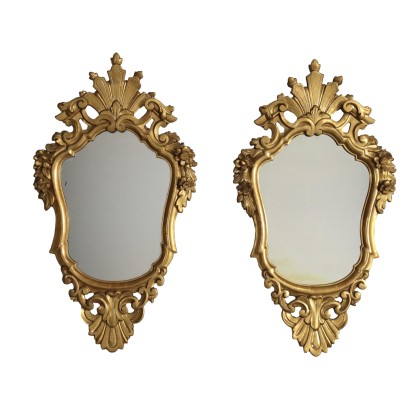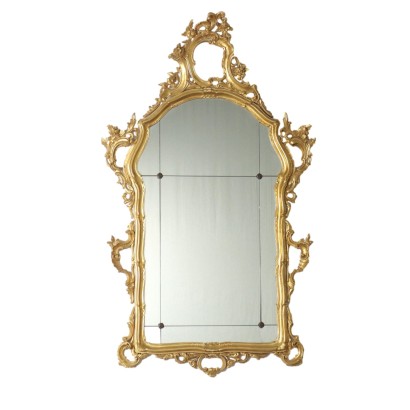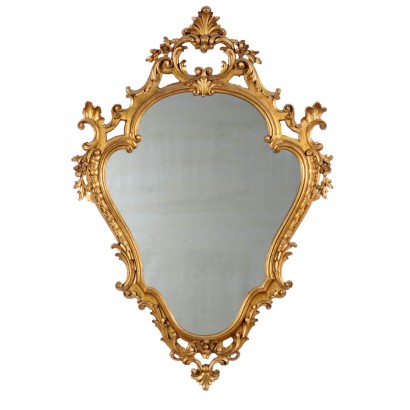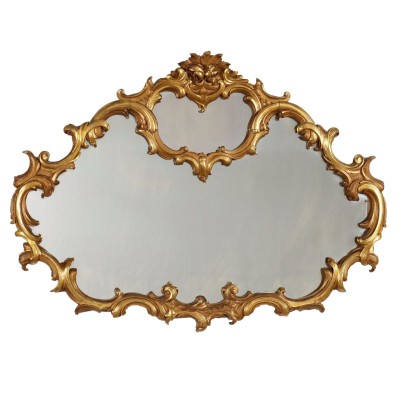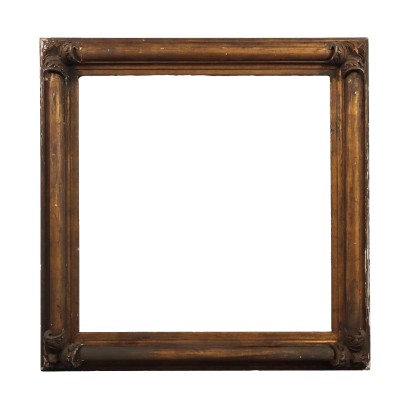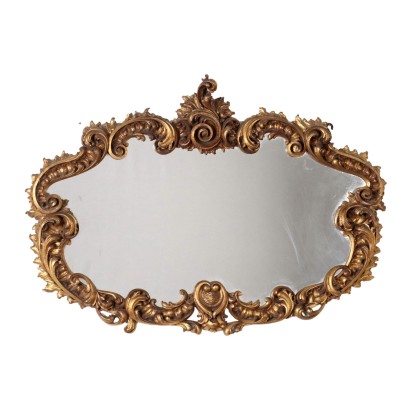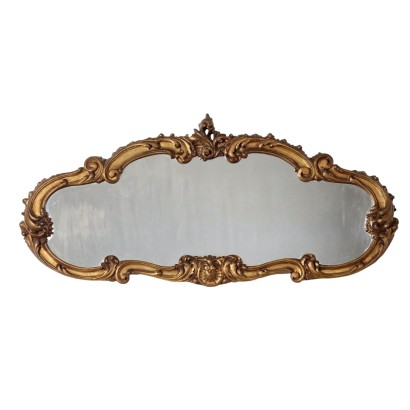Modern Painting Signed Angelo Dall'Oca Bianca Crayons on Cardboard - Lucietta 1940
Features
Lucietta 1940
Artist: Angelo Dall'Oca Bianca (1858-1942)
Artwork title: Lucietta
Age: 20th Century / 1901 - 2000
Subject: Portrait/Face
Origin: Italy
Artistic technique: Drawing
Technical specification: Pastel
Description : Lucietta
Crayons and white lead on cardboard. Signed and dated lower left; on the back there is a label from the Galleria d'Arte Moderna in Verona, which auctioned off numerous works by the artist that it owned. The work is accompanied by the purchase invoice from that auction in 1951, with the title of the work. Of humble origins, the Veronese artist Angelo Dall'Oca Bianca, even once he had become an established and appreciated artist, frequenting the Italian and international artistic and cultural environment, always maintained ties with his city, a constant source of inspiration for his artistic production, and the link with its poor; in 1939 he built the Villaggio Dall'Oca in Verona, for the benefit of the city's poor, and in 1941 he made a will, leaving all his money and his paintings to the city of Verona for welfare works. His painting was always of a purely veristic nature, influenced above all by contact with Giacomo Favretto. Framed work.
Product Condition:
Product in good condition, shows small signs of wear. We try to present the real condition as completely as possible with the photos. If some details are not clear from the photos, what is reported in the description is valid.
Frame Size (cm):
Height: 55
Width: 46
Depth: 4,5
Artwork dimensions (cm):
Height: 34
Width: 25
Additional Information
Artist: Angelo Dall'Oca Bianca (1858-1942)
Born in Born in Verona from a family of humble origins, Angelo Dall'Oca had to work from an early age as a laborer to support the family, following the death of his father. Encouraged by the fellow citizen sculptor Ugo Zannoni, who became interested in the portrait "My father", Angelo from 1873 to 1876 was able to attend the Cignaroli Academy in Verona, still linked to the traditional subjects of Venetian portraiture and Vedutism. In 1876 he obtained the first appreciation from critics and moved to Venice where he attended free nude courses at the Academy of Fine Arts and the studio of the realist Giacomo Favretto, from whom he also learned the use of photography as a preparatory element of the painting, and added the suffix Bianca to your surname. From that period he began to participate in Italian painting exhibitions. From 1885 he came into contact with the brothers Vittore and Alberto Grubicy, well-known international art dealers based in Milan, who were decisive in encouraging the sales of Dall'Oca Bianca's works and increasing his fame; his presence in the Lombard city also facilitated his acquaintance with Giovanni Segantini, Emilio Longoni and other well-known exponents of the Divisionist current. To complete his pictorial training and consolidate the positive feedback obtained from the critics, he decided to move to Rome where he met people of cultural importance such as Giosuè Carducci, Gabriele D'Annunzio and Francesco Paolo Michetti, with whom he approached the photographic medium that he uses as sketch for the subjects to be transposed on the canvas; in the capital he was introduced to Queen Margherita of Savoy, who commissioned various paintings from him. In this period he participated in the Venice Biennial exhibitions. From 1911, following several attacks by specialized critics and contemporary artists for his painting remained linked to the realist subject, considered no longer current and repetitive, Dall'Oca returned to Verona and withdrew, refusing to participate in the exhibitions, continuing to participate only in the development of culture in his city, fighting for the preservation of its historical heritage. In 1939 the Dall'Oca Village was inaugurated in Verona, built for the benefit of the less well-off of the city thanks to a donation from the painter through the proceeds from the sale of the Ave Maria painting and later expanded with his bequest of 1941. He died in his home in 1942.Age: 20th Century / 1901 - 2000
20th Century / 1901 - 2000Subject: Portrait/Face
Artistic technique: Drawing
Il disegno è il processo di tracciare segni su una superficie tramite l'applicazione di una pressione o il trascinamento di un apposito strumento sulla superficie. Gli strumenti sono: matite in grafite o colorate, penna, pennelli fini con inchiostro, pastelli a cera o carboncini; i supporti tradizionali più frequenti sono carta, cartoncino, tavola, muro, tela, rame, vetro.Technical specification: Pastel
Other customers have searched:
Se sei un appassionato d'arte, non perderti i nostri approfondimenti sul Blog Arte Di Mano in Mano e su FineArt by Di Mano in Mano - Arte:
Leggi di più
Ecco alcuni tra i principali articoli:Vedute
Falsi nell'arte antica
Un messaggio di fiducia per ripartire
La potenza espressiva dell'arte figurativa etiope
Breve Storia del Collezionismo
Giorgio Upiglio, maestro dei libri d'artista
Matthias Withoos detto "Calzetta bianca"
San Rocco pensaci tu - Classic Monday
Ecco alcuni esempi dell'arte del Novecento più bella che puoi trovare da noi:
I Raccoglitori di patate - Lavoro estivo - Augusto Colombo, 1935
I Taglialegna - Lavoro invernale - Augusto Colombo, 1933
Il lavoro femminile, Contardo Barbieri, 1954 ca.
Sapevi che l'arte può essere anche un ottimo investimento (e non solo per grandi portafogli)?
L'Arte tra Collezionismo e Investimento
FineArt: Arte come investimento
Dai un'occhiata alle nostre rubriche di divulgazione sull'arte:
Epoche
Lavorazioni e tecniche
Mostre ed Eventi
Protagonisti

